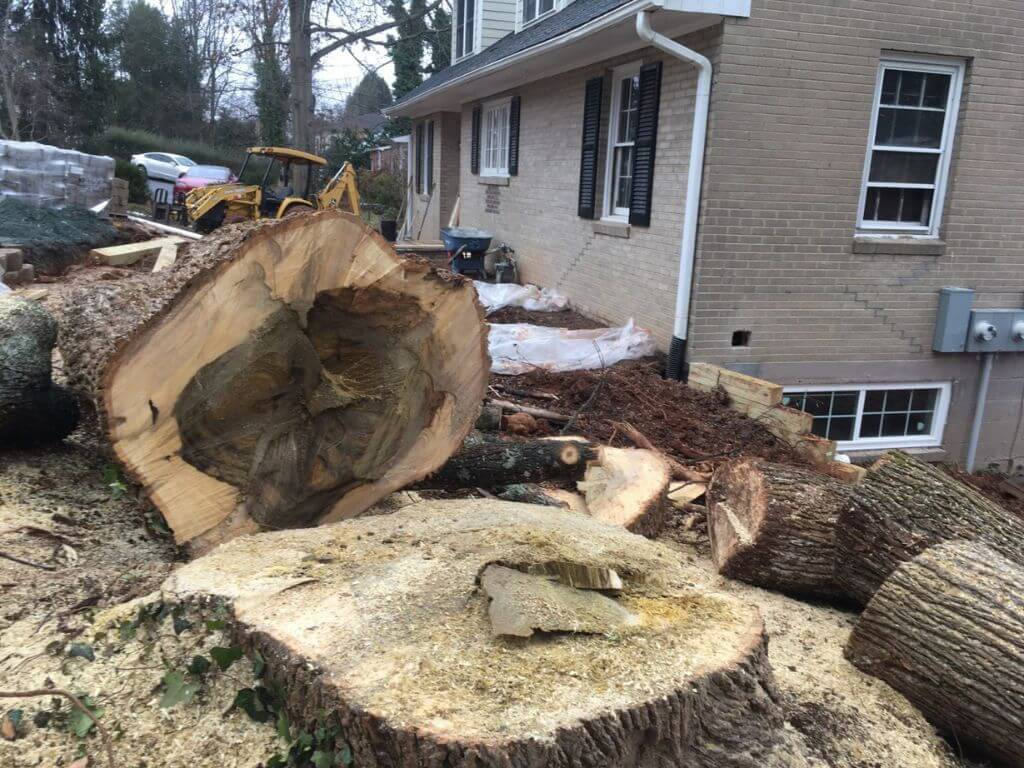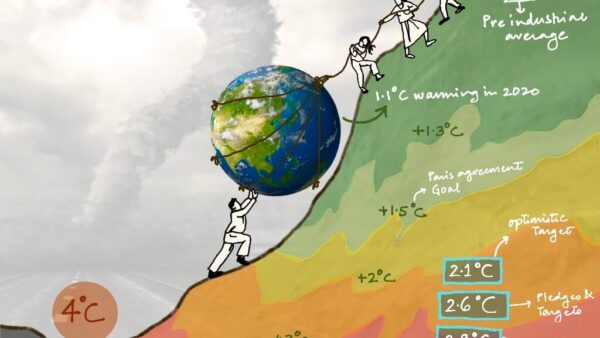Several weeks ago, I was startled when taking a typical morning walk to find that a large and majestic white oak tree had been cut down and lay in the front of a neighbour’s yard. It was a shocking and sad sight, a tree I had admired almost daily, reduced to a pile of sawed-up and lifeless segments on the ground. Several days later I happened upon the neighbour and mustered up the courage to ask why he had cut down the tree. He hemmed and vacillated a bit, mumbled something about how the tree was leaning, and felt it better to deal with the tree now than at some later point. He did not seem troubled at all about the decision, though slightly irritated at my question.
The last few months have been one similar sad discovery after another. It feels, at times, like I am living in a battleground, with arboreal casualties piling up all around me. Many large trees are being cut down all around my city and the cumulative result is showing. A recent study found that the City of Charlottesville has witnessed a sharp reduction in tree canopy in a short period of time: From around 50 percent a decade ago to around 35 percent today. We are still a leafy city, but deforestation is clearly accelerating.
What is striking to me is the casualness of these acts. The loss of a several-hundred-year-old tree ought to be a gut-wrenching decision, made only as an absolute last resort. I am surprised that others don’t seem to care as much as I do or feel as emotionally and viscerally harmed by these decisions. Trees just don’t seem to matter much; I am perplexed about why that is so and what steps we might take individually and collectively to change this. I find myself often holding the thought that, unfortunately, while I find these older trees absolutely wondrous, many others in this otherwise environmentally aware and progressive community do not feel the same way. And our city has an anemic tree code that does little to protect trees like this, though there are now proposals that would strengthen this code.
My conclusion, unfortunately, is that trees don’t seem to matter much. They are viewed for the most part as largely inanimate objects. Even quite modest reasons seem sufficient to justify cutting down trees, despite the reality that the loss, especially of large-diameter older trees, represents a wound and harm that extends well beyond the crown or boughs or the root zone of the individual tree. The decision to cut down such a tree should matter dearly.
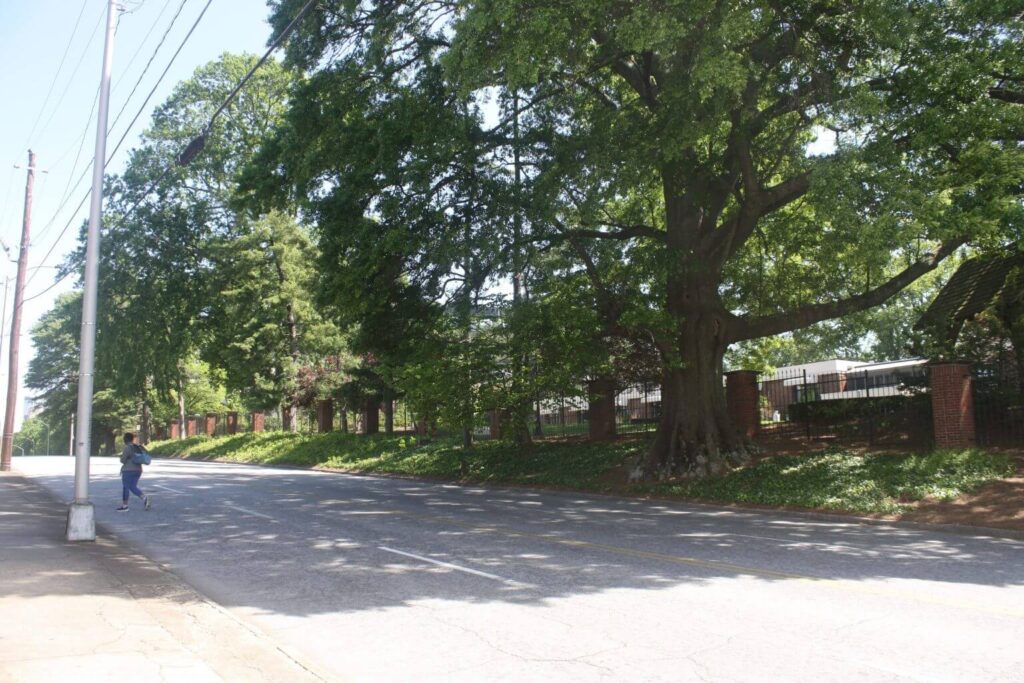
Photo: Tim Beatley
Why trees matter
There are many explanations for why trees do not seem to matter. Part of it could be attributed to what has been called “plant blindness”. That is, a tendency to care about animals and critters of all kinds that move and speak and grab our attention. Paying full attention to plants and trees has always been a challenge.
What are we to do to create a world (and cities) where trees really do matter? One approach is to continue to talk about the many benefits trees provide, individually and collectively. To speak of the important shading benefits, of their value in capturing and retaining stormwater, and in sequestering carbon. I am often emphasising the incredible beauty and delight that trees bring to me, daily and hourly. Trees and urban forests are having a day when it comes to appreciating their benefits in helping cities adapt to extreme heat.
But, perhaps, we have forgotten all the other daily delights that trees provide, and/or we tend to forget or minimise their value as an essential foundation in most of our daily nature diets. And, of course, each large tree is a remarkable and complex ecosystem itself providing spaces for birds, squirrels, and all manner of other life that animate our backyards and the spaces around cities. We would be lonely without trees and the remarkable habitats they provide.
Scholarly evidence mounts weekly, so perhaps an emphasis on these new insights would move the needle. This includes a recent study from Belgium that shows a sharp relationship between sales of mood disorder drugs and heart disease medication with the presence and size of trees―the larger the crown the lower the need for such medications. Or the recent study showing the inverse relationship between trees and mortality. The health benefits of trees, mental health benefits especially, are remarkable, and to my way of thinking, irrefutable.
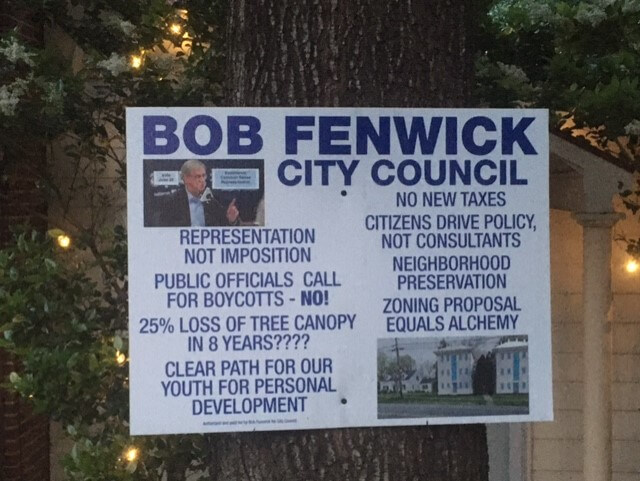
Photo: Tim Beatley
Techniques to save trees
These are all important arguments, and we should continue to make them. But they are not widely understood and unfortunately do not seem to change behaviour much. That is too bad, but it suggests we need other techniques and strategies and approaches if we are ever to reach a point where trees really do matter. What might we do to shift our mindset and attitude so that trees do indeed matter? There are several promising directions.
A part of what we must do is to better understand the psychology of trees, tree protection, and the importance we give to urban trees and forests. Trees are cut down for various reasons – a dislike for the leaves they deposit every fall, concerns about trees falling on roofs, a desire to let in more light or to change the look or feel of a house. I do not wish to minimise these reasons but they mostly seem insufficient to justify the loss of a grand and magnificent living being. We fail, for the most part, in our reasoning to think carefully and adequately account for the public costs on the other side of the ledger sheet.
Trees largely recede into the background of our lives. We may not be alarmed by their loss when it happens, in part, because we tend not even to notice or pay much attention to them. As the late poet Mary Oliver pointedly observed, “attention is the beginning of devotion”. How do we work to make the trees around us more visible and important? What can we do to help to make them matter?
Making trees personal
Dating trees might help persuade some of us about their right to exist. When I speak of the estimated age of the grand white oak that sits adjacent to the UVA School of Architecture―likely close to 300 years old—it never fails to generate an audible “wow”. We must truly see and experience the trees and forests around us, in personal and visceral ways. These can happen in many creative ways. In many places, there are organised tree walks and community tree celebrations. In some cities, there are annual “Tree of the Year” competitions. There are online maps that help us collect and disseminate the personal stories and histories of the trees around us. QR codes, Virtual Reality, and many other digital technologies are increasingly used to foster greater awareness and connection.
There are also many ways that we can practice modern life (and lives) in ways that pay attention to the trees around us; that actively acknowledge them as co-occupants and co-citizens. Standing up and actively giving voice to trees is one way. Mourning and grieving the loss of special trees. Recognising the many ways that the histories and lives of trees and humans are bound together. Various tree rituals are helpful as well, some even daily. For example, I hold “tree hours” for students in my classes, convening under an old white oak.
Here at UVA, I now require students in my Cities + Nature class to keep a nature journal and one of the directed entry assignments is to find and write about their favourite tree on campus. Part of that involves learning as much as they can about that tree and drawing it, spending time noticing the trees around, learning their common species names, the colors, and shapes of leaves, and sitting under or near them to listen to the sounds that emanate—what writer David George Haskell has called the “song of trees”.
Calculating the age of a tree is another way to particularise it and also to gain a sense of perspective about what it took to live, grow and survive over a long period of time. The more we learn and absorb about a particular tree the more we are likely to care about it and come to its defense. The more we know about specific trees, the less likely we are to see the decision to cut down a tree as a trivial thing, and the more protective we are likely to be.
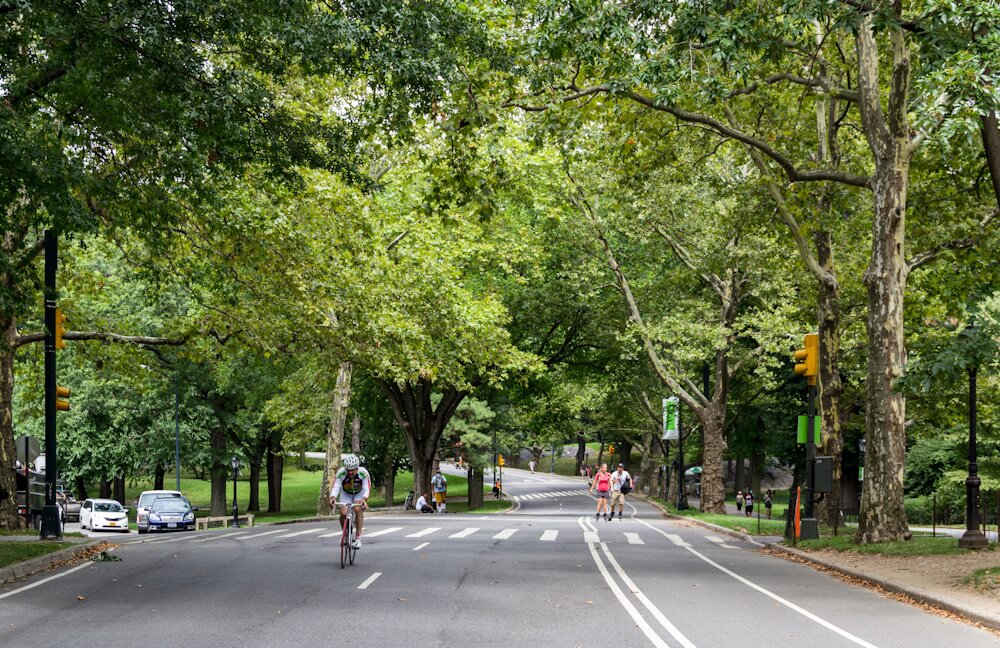
Photo: Creative Commons
Naming trees will also help. While subject to the perennial criticism of over-anthropomorphising, where we can we need to name trees. Specific names that send the signal. It is a living individual deserving of attention and care. Native American author Robin Wall Kimmerer, in her powerful book Braiding Sweetgrass, rightly concurs about the importance of names. Naming means they become people. Native Americans speak of trees and forests, she tells us, as the “standing people”, and view non-human lives through a lens of kinship.
A “grammar of animacy”, she advises, strengthens this sense of trees as people. Conversely “when we tell them the tree is not a who, but an it, we make that maple an object; we put a barrier between us, absolving ourselves of moral responsibility and opening the door to exploitation”. Kimmerer eloquently describes the central role of gratitude and reciprocity in indigenous cultures. Gratitude begets reciprocity. What would reciprocity look like for urban trees? Taking meaningful steps to care for and water trees in times of drought, to steward over and protect them from the incessant chainsaw.
A new tree ethic
As much as anything, then, we need to develop and disseminate a new ethic of trees – one that sets out a new narrative about them, and new assumptions about their relationship to humans. It would necessarily build on these Native American notions of trees as kin and the importance of reciprocity.
Another element of this ethic involves the inherently public nature of the decisions made about them, especially older, ancient trees. As trees get larger and older the magnitude of their impacts all grow: the extent of the shade they provide, the caterpillars they offer up to nesting birds, and the carbon they sequester. In this way, their “publicness” grows substantially over time. The loss of such trees will have a large public impact. Protecting and caring for these trees can be framed as a civic act and as a modern element of what it means to be a good citizen.
Margaret Renkl, writing in the New York Times, calls for a “profound paradigm shift” and says eloquently: “We need to stop thinking of trees as objects that belong to us…We have borrowed them from the past, and we owe them to the future”. What Renkl describes is the need for a new kind of tree ethic; a collective sense of what we owe trees and forests, what our ethical obligations are to them and relative to them. We are duty-bound to recognise the immense public benefits they provide, to treat them with care and respect. Older, larger trees especially ought to be understood as living elements of our communities worthy of celebration, veneration, and protection.
This brings us closer to the idea of the rights of nature, a perspective growing in importance globally. The view that trees or urban grove have intrinsic moral value and an inherent right to exist, irrespective of whatever utility or value the tree has for humans. It was a profound, and still quite a new idea, when I first read Christopher Stone’s groundbreaking essay “Should Trees Have Standing?”. He proposed, in 1972, the “unthinkable” which was “that we give legal rights to forests, oceans, rivers and other so-called ‘natural objects’ in the environment, indeed to the natural environment as a whole”. The adoption of a strong tree protection ordinance or code would help greatly too.
There are other things we can do, of course, including working to change the economic and moral signals about the trees around us. I have advocated for many years the need to reform our local property tax systems to better take into account trees and the ecosystem services provided especially older, larger trees. Most local property assessments do not explicitly consider trees, but they could. There are many precedents for such an approach. In other parts of the world, the idea of offering annual payments for actions that support the protection of the environment.
Standing up for trees
Can this new tree ethic, or paradigm shift to use Renkl’s terms, really transcend politics, and should it? Rather than transcend it, it must underpin and guide local politics. While I have pointed out the importance of individual behaviour, at the end of the day the political system must deliver the strong tree codes we want and need. We should still have heated and earnest conversations about the trees in our neighbourhood, but we should also demand that trees throughout the community be protected, even those lacking the visibility or the support of nearby engaged neighbours.
Standing up for the trees around us has the potential to significantly change local politics. I have been encouraged that, in my home city, the loss of trees has found its way into a recent local political campaign. This is a good start. And the city has begun work on a new tree code, though it remains to be seen how stringent it will be, and how assiduously it will be enforced. Cultivating a deeper community tree ethic will remain an important and necessary step.
Trees do matter and those of us who believe strongly that they do must stand up and say so. We must name our trees, celebrate them, and speak their praises, and work for stronger codes and ordinances that acknowledge both the immense beauty and health they bring us, but also their inherent value and right to exist.
Timothy Beatley is the Teresa Heinz Professor of Sustainable Communities, in the Department of Urban and Environmental Planning, School of Architecture at the University of Virginia, where he has taught for the last twenty-five years. Much of Beatley’s work focuses on the subject of sustainable communities, and creative strategies by which cities and towns can fundamentally reduce their ecological footprints. This essay was republished, with permission, from the journal The Nature of Cities, and has been edited for length.
Cover photo: One of the many older trees lost recently in Charlottesville, VA by Tim Beatley

